
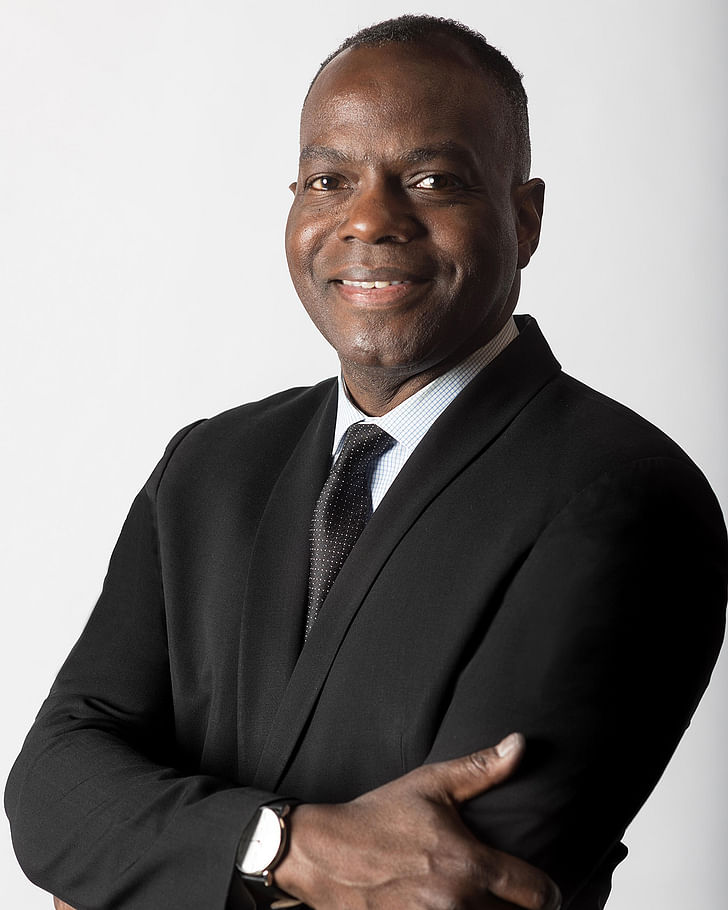
For this edition of the Deans List we spoke with incoming dean Milton Curry at the University of Southern California. Dean Curry told us about his vision for the school, what it means to be a citizen architect and the commitment of architecture thinking to public good.
USC’s School of Architecture, recently joining Architectural Record's list of top 10 architecture schools in the country, opened in 1916 and is the oldest school of architecture in Southern California. With 750 students and over 100 faculty members, it is also one of the largest in the country. Since its beginning, a century ago, the school has offered an accredited five-year undergraduate program. Today it also offers various dual-degree, professional and post-professional graduate programs in building sciences, heritage conservation and landscape architecture.
USC School of Architecture occupies one of the rare non-red and yellow bricks neo-Romanesque Revival building on campus. Watt Hall, a three-story concrete building, was designed for the school by alumnus, and former faculty member, Edward Killingsworth in 1974. The school also owns and cares for the Gamble house—a national historic landmark in Pasadena built by Greene and Greene, masters of the Arts and Crafts Movement—and the Freeman house in the Hollywood Hills designed by Frank Lloyd Wright and built in 1924.
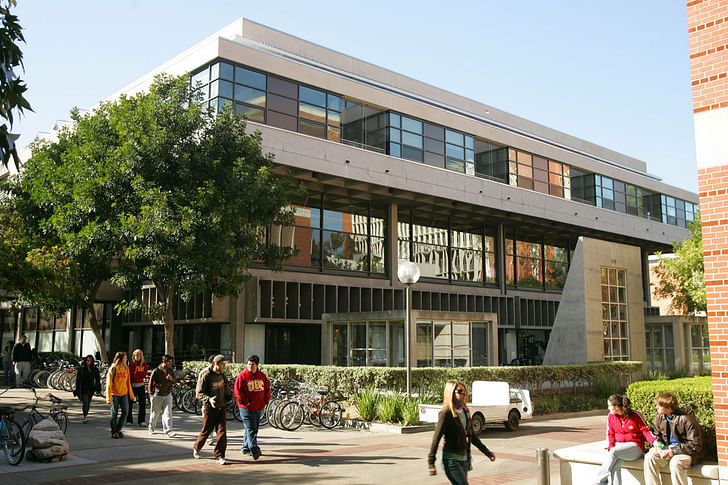
One month into his new post, Archinect spoke with the school’s new dean, Milton Curry, about the school’s current identity and future. Formerly the Associate Dean for academic affairs and strategic initiatives at the University of Michigan's Taubman College of Architecture and Urban Planning, Curry holds a Bachelor of Architecture from Cornell University and a Master of Architecture (architecture theory) from Harvard University's Graduate School of Design. Curry is the founder of CriticalProductive Journal, a peer-reviewed journal of design and scholarship about cities and urbanization. Over the course of his career, he has developed an expertise in architecture, urbanization and cultural theory and while at USC, is expected to shift the school's pedagogical focus toward theory, greater incorporate the needs of Los Angeles into the curriculum, and bridge more gaps between aligning disciplines.
What do you see as being the School of Architecture’s pedagogical stance and how would you characterize the program currently or going forward?
USC has a strong legacy in professional practice and preparing students for diverse architectural practices. I see the current strength of the curriculum and the pedagogy as preparing students for careers and activities that center around architecture, urban design and landscape architecture.
Going forward, we will build on that strength and ask foundational questions that are culturally relevant to important issues globally. Questions about affordable housing can't fully be answered just through design, you have to understand the financial background of that question. To me, these foundational questions will require interdisciplinary thinkers and collaborators.
So what kind of students do you think would flourish at the USC school of architecture?
USC is a top tier research university that's ascending with six out of eighteen schools dedicated to the arts. That's a third of the academic schools and colleges dedicated to the arts. What kind of student would flourish here? A student who has a really capacious intellectual appetite for both the foundational questions that are driving culture as well as a student who is highly creative and wants to customize their education.
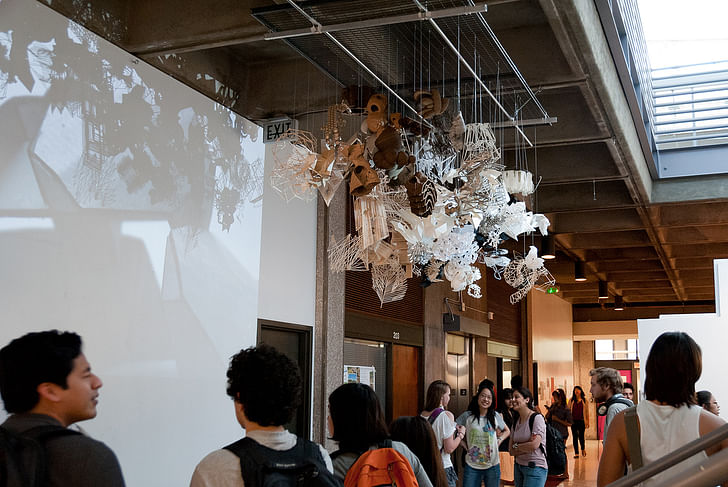
You mentioned students being able to customize their educational experience here. Can you speak about the existing connections between the School of Architecture and the other schools and departments at USC, and the connections you hope to build and strengthen?
It's happening, I think in some ways through individual faculty, faculty to faculty, peer to peer connections, and then in other areas it's happening institutionally. The key is to support faculty to make those peer to peer connections to support co-teaching and to support faculty who are doing research across the lines of different schools and colleges. So that's something I look to support on an organic basis.
For the institutional connections, we're talking about creating more permanent structures of pedagogical integration into our degree programs. We have an undergraduate concentration in Geodesign within Dornsife College of Letters, Arts and Sciences here at USC. The Price School has the urban planning program and the Marshall Business School has Real Estate Finance programs. I think real estate, business and urban planning are key to how we think about the environment and urban development, so strengthening our partnerships with them will be something that we'll look to do in the future. A lot to choose from, but that's the beauty of being where we are situated.

The School of Architecture is part of USC, a private research university, can you speak of the research that's done at the school of architecture and that you hope to develop?
We have very good research capacity in Master of Building Science area—faculty member Joon-ho Choi received the 2017 National Science Foundation award for his research project “Human-Building Integration: Bio-Sensing Adaptive Environmental Control for Human Health and Sustainability.”
We've also had impactful research coming from faculty working directly with students. Our homeless studio produced a prototype for a temporary homeless shelter that could be in place in sites that had been designated for more permanent housing, in between the time that those sites are designated, and the time that permanent construction actually began.
If I think in the future, there are three areas that are very important to me. One is democratic capitalism—thinking about how issues of inequality and issues of urbanization are happening. What other forms of communal engagement and productivity can occur that would be empowering to not only the 1 percent but the 99 percent?
Number two is urbanization and incarceration: prisons as well as other sites of imprisonment such as the refugee camps. Refugee camps are an urban environments because they are very densely populated but are often not thought about within the context of architectural space or urban space.
The third is technology in the public sphere. We spend a lot of time focusing on, sometimes narcissistically, digital fabrication technology and how we make buildings. I'm interested in that, but I'm also interested in the impact of technology in the public sphere. We need to understand and theorize and think very deeply about the role of technology in the public sphere.
Do you have a method for integrating what you see in professional practice into academia and the other way around?
What we do and will do here at USC is to rethink the whole notion of what competence looks like for a someone who goes through a professional program. Is it to give a student a kind of generic overview of what it means to run a professional practice? Does competency just mean exploring the potential for entrepreneurship? Does competency mean the ability to critique conventional forms of how architecture and urban design get capitalized? I think we need to decide for ourselves, as a school, within and beyond the constraints of the Accreditation Board, what does competency in professional practice look like and what we want it to look like?
We move in cycles where academia has the capacity and the capital to fund certain kinds of research that practice cannot. I think we have to understand there may be things that professional practice is doing on a research basis that we could learn from or partner with them on. Those are issues where we need a knowledge exchange between practice and academia
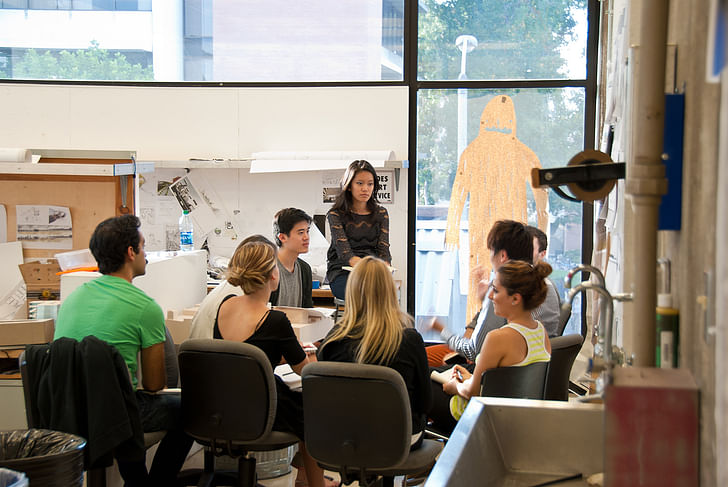
What do you see as the biggest challenge academically and professionally facing architecture students today?
The architectural discipline has become complex for two primary reasons. One is academic and the other is professional. Academically I think that there's a lot more choice for students interested in architecture and design. Our competitors are not just other architecture schools, they are schools of business, schools of engineering, schools of design etc. These offer students more latitude often with fewer constraints in terms of accessing knowledge in areas of design that they're interested in without necessarily preparing themselves to be a licensed practitioner of architecture. I think the choice, particularly at the undergraduate level, is immense for students who previously, one or two generations ago, would have thought about architecture because it was the singular gateway or the most intellectually robust gateway to a larger constellation of design professions. That's no longer the case.
On the professional side, post-Great Recession, more integrated architecture, design-build construction firms have been getting very big and are competing against what we normally would think of as large architecture firms.Then you have a middle group of what used to be mid-sized architecture firms really hollowing out. I think that presents a very different career landscape for our graduates. We need to understand that more and understand how architects can remain central to conversations about the design of buildings and the design of cities.
Do you feel that the spot is threatened by other fields?
Yes, I do!
‘Design thinking’ is, for me, the instrumentalization of methods of design for profit. “Architectural thinking” is understanding that the role of the designer, within the context of architecture, always incorporates the public good no matter if you are you doing a private or public building. The notion of public good is embedded within the DNA of architecture period. That has to be and has to remain in the DNA of architecture and architecture schools.That's what I call “architectural thinking”. If we market that as the gateway to other design disciplines then we're on solid competitive footing against design programs, business schools, and engineering schools. There are things that we can learn from those programs. But, I think it's important to preserve the discipline of architecture as something that is always looking at public space. A private building is next to a sidewalk. Well, that's a responsibility! I think that architecture has to not only embrace but has to defend the social territory of architecture within the cultural sphere because a lot of these other disciplines are just not in a position to do that.
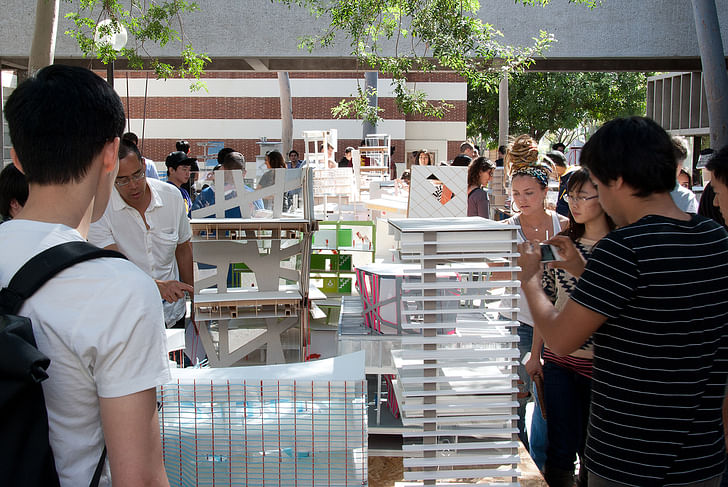
And that's the perfect transition to my next question, how do you teach students a code of ethics in architecture?
I wouldn't frame it as a code of ethics. I would frame it as a disposition towards authenticity and understanding the context that one is working in. I would assert that any project should have some notion of cultural relevance. We have to institutionalize aspects of ethics within specific courses and within specific extracurricular activities. That makes it just a part of the school, part of our learning and teaching environment.
You've used the term “citizen architect" before in other interviews and lectures. What is your personal definition of that term, and what does it mean in the context of USC?
I’m using the term to mean that architects are citizens too. Architects are and need to be engaged in the role of citizenship which means engagement in politics, engagement in public policy and engagement in criticism, activism and social movements. Architects are part of the community that they reside in and that they work in. I think that's an important fundamental asset that we need to reinstate within the public imagination, the architect is first and foremost a citizen.
Architects should care about the nature of what it means to be considered human. Design is central to affirming a certain form of human subjectivity. Being a citizen doesn't necessarily mean a connection to a nation state, it actually in my view affirms a kind of common bond of humanity. As designers, we're looking to provide value to a broad and diverse body politic regardless of where they were born, their nationality, ethnicity, gender, sexuality, etc.

And how do you think the students can learn from Los Angeles?
Greater Los Angeles is an extremely diverse, global community and the school is located within a dynamic urban environment. Being one of the larger schools of architecture within a research university, I think we have an obligation to provide an educational platform with degrees of customization that force students to engage with the world.
I'm very interested in how we can institutionalize local connections to greater Los Angeles and how we can get our students to understand the context that they're going to live in for one to five years. The Central Valley of California is urban, on top of rural, on top of Suburban, on top of an ecological landscape that's very unique. Also, the border region between the United States and Mexico at the base of California is a very interesting milieu of a lot of knowledge exchange, economic exchange, etc. All of that is within very close proximity to USC. Then, going beyond that of course: Asia, Africa and Latin South America. I think it's very important for our students to be on the next frontier of global Urban Development and those are the places where it's happening.

By the end of your tenure at USC, what do you hope to have accomplished?
I want the School of Architecture to be recognized as asking the foundational questions and providing impactful research and pedagogy around those foundational questions.
Secondly, I want the school of architecture to be recognized as a leader in creating a more diverse student body- and we will be very aggressive in that space. I don't think we can afford to lose another generation of potential architects who can bring us perspectives and ideas that we don't have and will not have unless we open up to a broader more diverse group of particularly under-represented minorities as well as those from different class levels. As we're trying to deal with urbanization inequality, we can't sit here and run schools of architecture with only the top 5 percent of students. That's ludicrous.
I think the other thing is to provide an educational platform that's truly of our time. That means taking the competitive landscape of design schools, business schools and engineering schools and looking very deeply at how we can become more relevant, so that we are not only competing with these other fields, but learning from and leveraging from that competition to actually create a better pedagogy that's going to allow our students to be even more relevant to the challenges that they'll face.

I know you founded two academic journals in your career, are you hoping to start a student or faculty publication at USC?
First, we will be seeking to formulate ways to better express both the legacy of the school and its unique value proposition going forward. This will likely lead to a repositioning of both our online and print collateral material to reflect these new propositions, these new projections, as well as the different constituencies we are trying to reach. Within that process, I'm sure we'll have some ideas on new publications, either print and or online, that would allow us to project the unique contributions that we're making here to the discipline. I'll continue to develop “CriticalProductive Journal” in affiliation with the school. This is an exciting time and we look forward to sharing our ideas, creating platforms for debate, and being fully engaged in the discourses of architecture and related disciplines.
Noémie Despland-Lichtert is an urban historian, curator, educator and hot-dog mapper.
No Comments
Block this user
Are you sure you want to block this user and hide all related comments throughout the site?
Archinect
This is your first comment on Archinect. Your comment will be visible once approved.